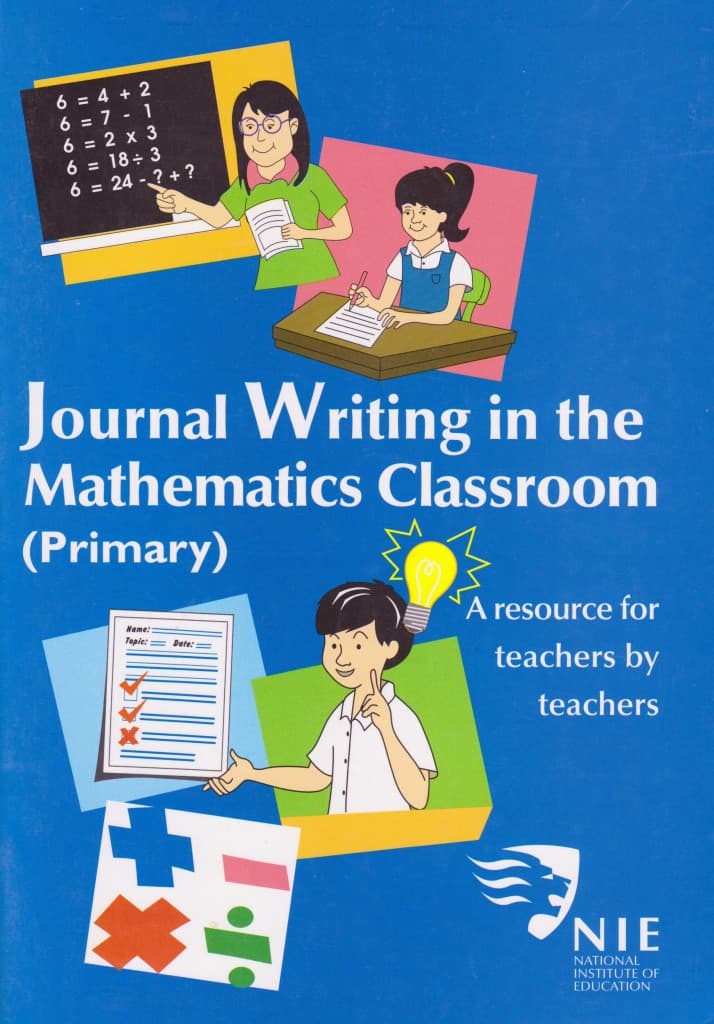Out in Left Field posts a Math Problem of the Week comparing different curricula that schools use. Last week’s Riddles in 2nd Grade Investigations vs. Singapore Math and the ensuing comments brought up discussion on the value of writing in the mathematics classroom. I picked up a book entitled: Journal Writing in the Mathematics Classroom (Primary) when I was in Singapore. It is written and published by professors at Singapore’s National Institute of Education.
Among the chapters listed:
Why use Journal Writing?
Journal writing reinforces the learning and provides pupils with opportunities to engage in reflection, question their own understanding, connect the abstract and the concrete, and apply the knowledge they have acquired to solve problems.
How to Carry Out Journal Writing?
This section starts with an this powerful statement about journal writing in the classroom:
Journal writing is a complex process that requires effort and patience.
The authors further suggest that these open-ended prompts encourage pupils to write about their opinions and feelings on mathematics. They have adapted and describe three types of general writing prompts:
1. Affective or Attitudinal (How do you feel?)
- My best kept secret about math is …
- If math could be a colour (shape, sound) it would be … because
2. Mathematical content (What is it about?)
- How would you describe a …
- What patterns do you notice in …
3. Process (Explain how!)
- Find something that you learned today that is similar to something you already knew.
- You know several ways to … Which method is you favourite? Why?
There is a list of 15 of each type of general writing prompt. The bulk of the book, however, focuses on specific writing prompts that are based on mathematical topics.
Possible Negative Aspects of Journal Writing
(Lessons learned the hard way when I was teaching!)
- a. The potential for the teacher to hurt pupil’s feelings.
b. The loss of instructional time to teach syllabuses
c. Tremendous increase in the marking load of the teacher.
d. Emphasis on language proficiency
Scoring Rubrics and Student Examples
This section includes examples of two types of scoring rubrics: Analytic, which allows for separate evaluation of selected factors and Holistic, which can be used when teachers want to rate student responses more generally.
A Collection of Specific Writing Prompts
Finally, there are 55 specific writing prompts differentiated by grade level and topic. Topics include: Whole Numbers, Fractions, Decimals, Percentage, Ratio, Rate, Measurement, Geometry, Statistics and Algebra. Some examples:
Topic: Whole Numbers
Level: Primary 2 – 6
Write a word problem and make a picture that goes with 4 x 3.
Topic: Decimals
Level: Primary 4 – 6
Find two decimal numbers between 0.2 and 0.3. How many decimal numbers are there between 0.2 and 0.3? Explain.





















I am very interested in starting Journal Writing in math, and I love Singapore method. I am searching the internet for where I can get this book, with no success! I can’t fly to Singapore like you to get it! Please help me.
How do we go about purchasing this book? Math Journal Writing
Interested to buy this book but nie bookshop did not have any supply. Can i know how to purchase it.